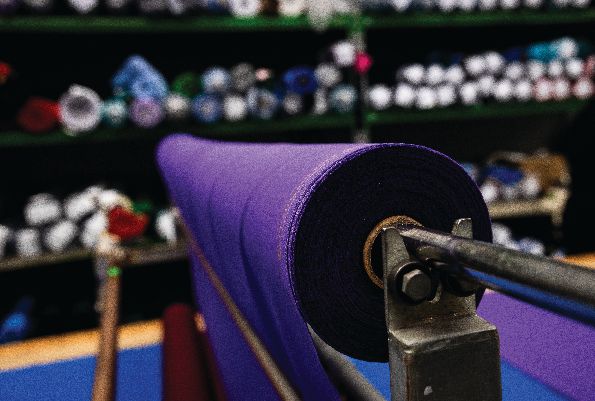How BioGarde fabric is made

How BioGarde Fabric is Made
In today's blog post, we will take a closer look at the fascinating process behind the production of BioGarde Fabric. This innovative fabric is known for its exceptional quality and anti-microbial properties, making it a popular choice among consumers.
- Fiber Preparation
The journey of BioGarde Fabric begins with the fiber preparation stage. Here, a careful blend of polyester and rayon fibers is meticulously crafted to achieve the perfect composition of 65% polyester and 35% rayon by weight. This blend is then subjected to a carding and drawing process, which further refines the fibers in preparation for the next step.
- Yarn Process
Next comes the yarn process. The blended fibers are drawn into smaller diameters and twisted into fine yarns using state-of-the-art coner machines. These yarns are then spun into cones of equal quantity, ensuring consistency and uniformity throughout the fabric.
- Weaving Process
Once the yarns are ready, they are sent to the weaving process. Advanced air jet loom machines are employed to weave the yarns into what is known as griege cloth. This cloth is then carefully inspected for any defects, ensuring that only the highest quality fabric moves forward in the production process.
- Dyeing Process
After passing the rigorous quality control inspection, the griege cloth moves on to the dyeing process. First, any residual impurities are removed from the cloth in a scouring de-sizing machine. The cloth is then subjected to heat and sizing in a stenter machine, which adjusts it to the correct length and width. Once properly prepared, the cloth is dyed to the desired color using a jet dyeing machine. It is during this stage that anti-bacterial chemicals are added to enhance the fabric's antimicrobial properties. Before moving forward, the cloth undergoes a thorough check against the standard color to ensure consistency.
To further refine the fabric, it goes through a singeing process where of small hairs on the cloth are burned off using a high-speed gas flame. This step not only enhances the fabric's appearance but also improves its overall quality.
- Finishing Process
The next stage in the production process is the finishing process. Here, a teflon chemical is added to the fabric through a process called impregnation. The fabric is dipped into the chemical solution, ensuring that it is thoroughly coated. It is then pressed with a padder, pre-dried, and cured to lock in the desired properties. Before proceeding, the fabric undergoes a final 100% inspection to guarantee that it meets the highest standards of quality.
- Wrapping Process
Finally, the finished fabric is ready for packaging. It is cut into standard lengths, typically ranging from 50 meters to 100 meters per roll. Each roll is carefully wrapped in plastic for protection and then packed into cartons for shipment.
And there you have it – a behind-the-scenes look at how BioGarde Fabric is made. From fiber preparation to weaving, dyeing, finishing, and packaging, every step in this intricate process contributes to the creation of a high-quality fabric that offers exceptional performance and durability. So next time you come across BioGarde Fabric, you'll have a deeper appreciation for the craftsmanship and innovation that goes into its production.